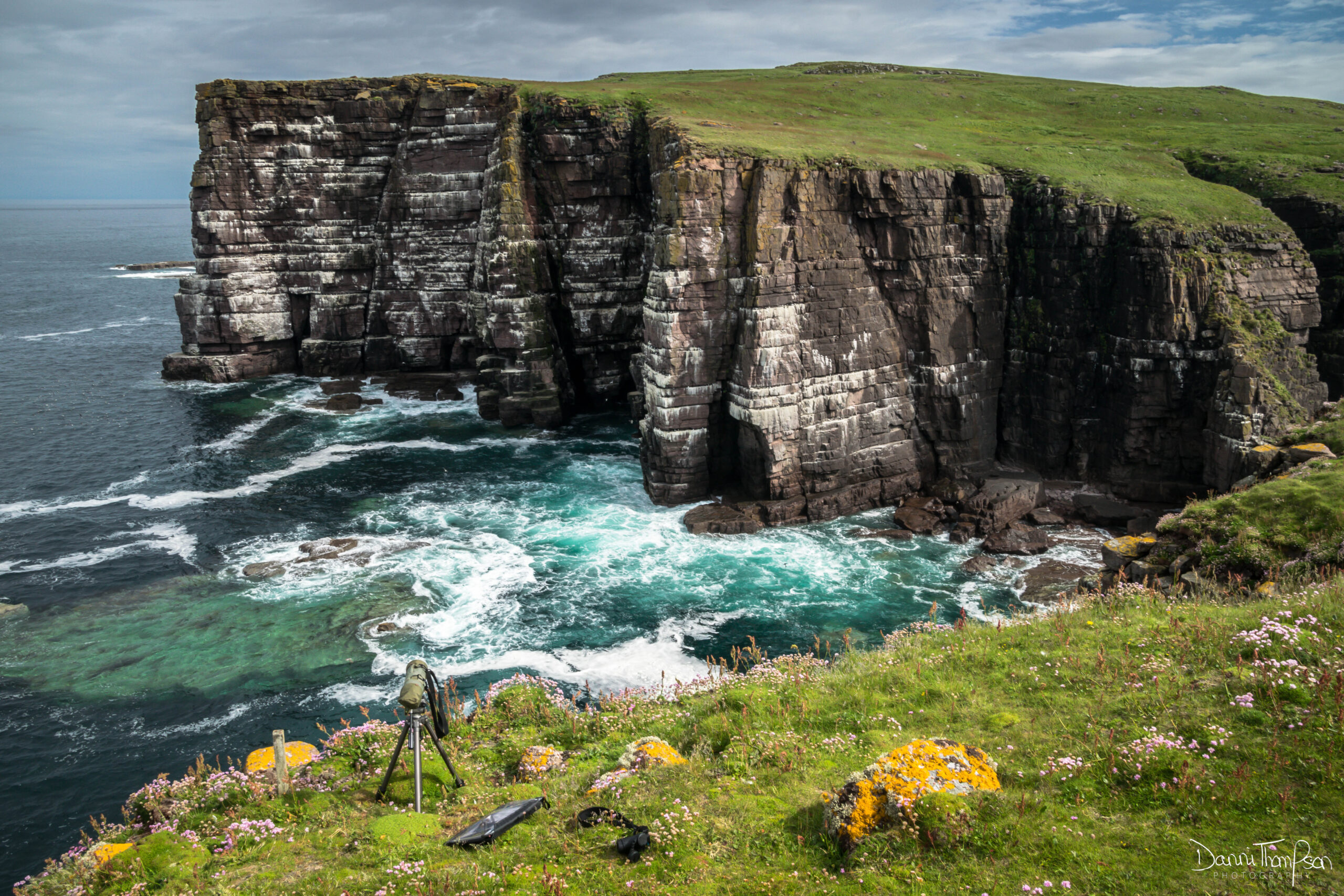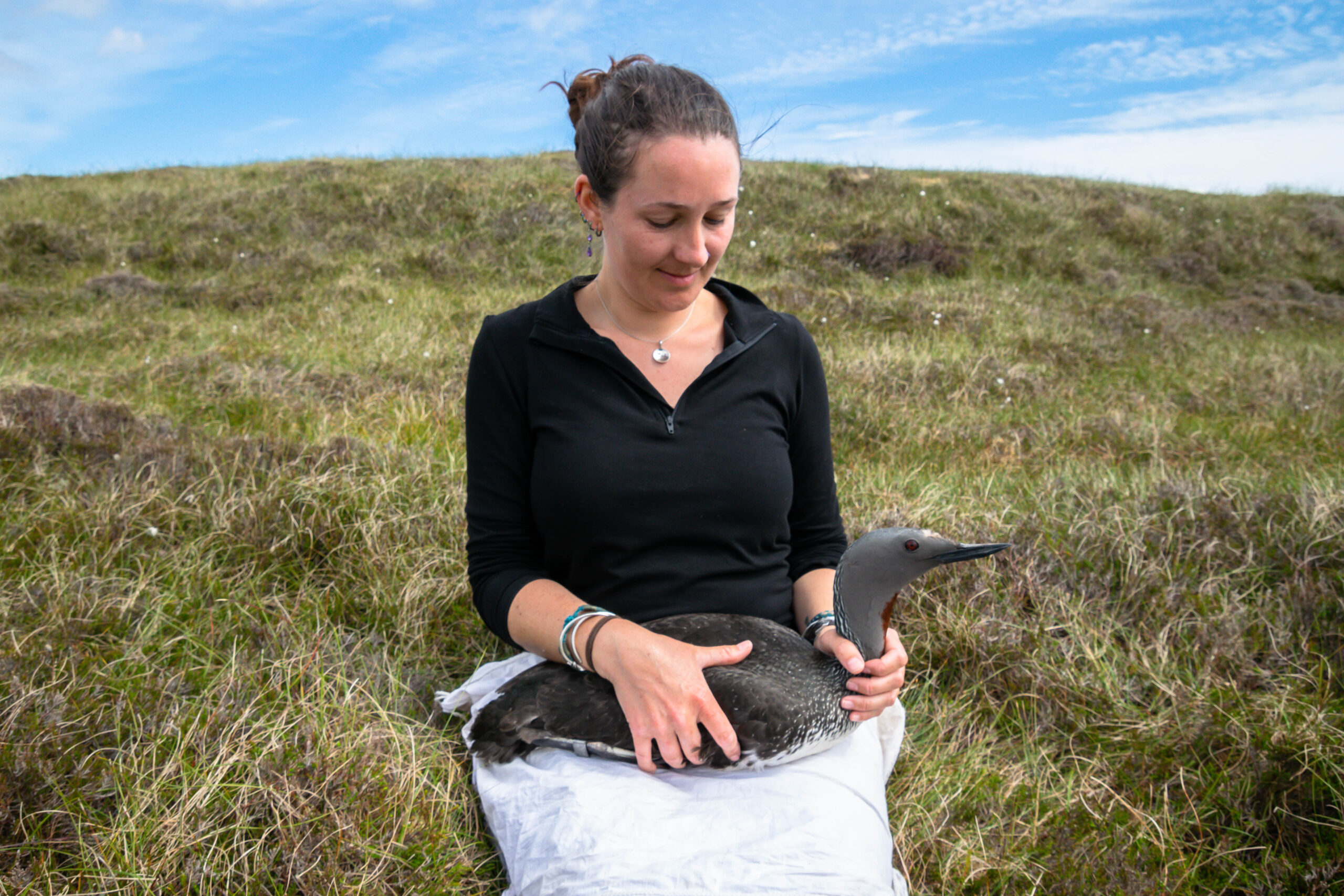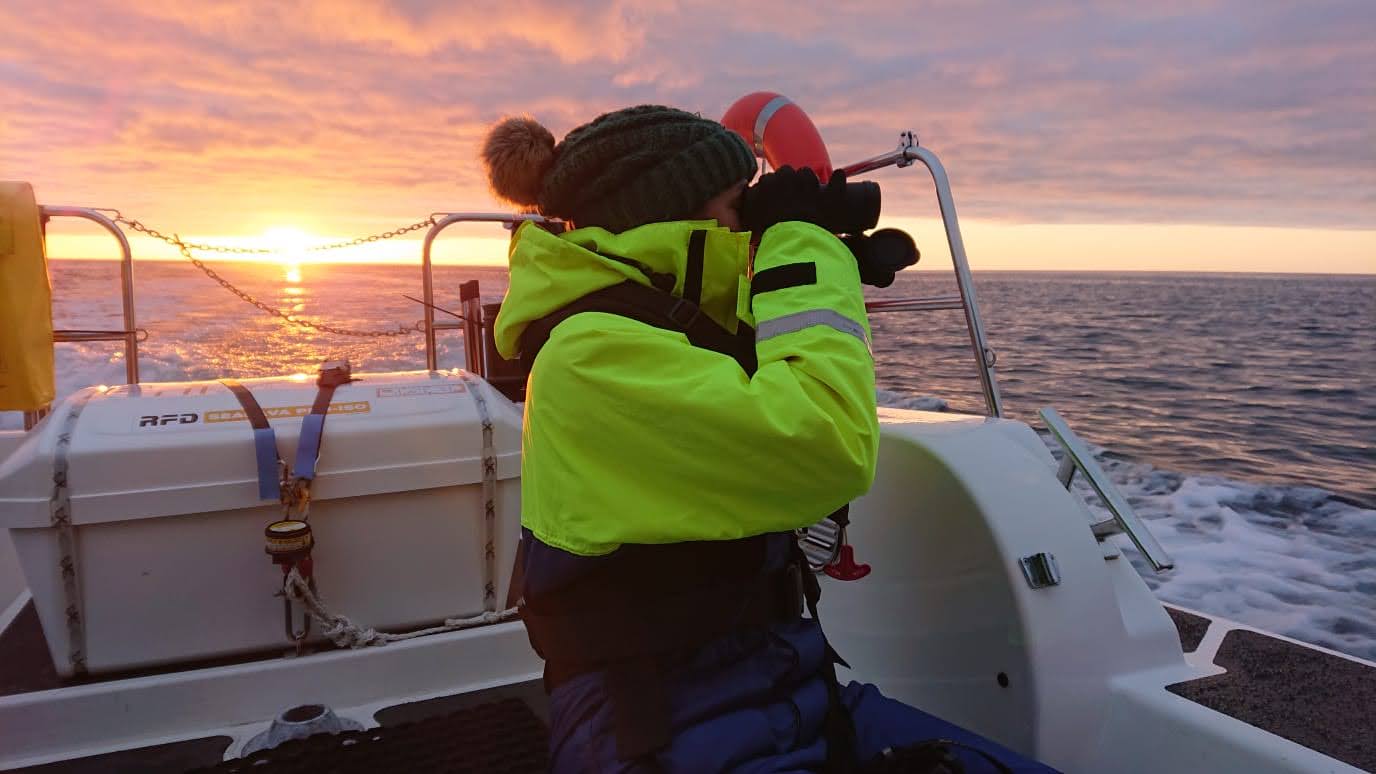Looking through the lens whilst perched on the edge of a cliff, being blasted by the wind and immersed in the raucous cacophony and distinctive yet indescribable scent of a bustling seabird colony, all to the backing track of turquoise waves breaking rhythmically against the rock. This quickly became my happy place and my passion.

My sights were set on a path in wildlife conservation from an early age, and this dream has taken me on many adventures, from studying frog diversity in the Peruvian Amazon as part of my undergraduate degree in Wildlife Conservation with the University of Kent, to being part of the amazing, dedicated team who achieved the world’s first butterfly eradication in New Zealand. But it was my time working as the Ranger on Handa Island, an otherwise uninhabited wildlife reserve off the northwest coast of Scotland, where I fell in love with seabirds and knew I’d found a new road to follow.
Seabirds are amongst the most threatened birds in the world. A multitude of pressures including climate change, bycatch, overfishing, plastic pollution and invasive species means there’s no shortage of work to be done to help reduce and halt declines to an essential component of the marine environment.

Working as a Seabird Ecologist with the Joint Nature Conservation Committee for the last three years has given me a wealth of experience. Having contributed to a wide array of projects including colony monitoring, leading a citizen science project, advising on offshore industries, and developing a greater understanding of policy needs, I’ve had an itch to take what I’ve learnt and use this as a base to better my skills as a research scientist.

I’m beyond excited to start this next chapter. During my PhD I’ll be working with an understudied species, the Falkland Island shag (Leucocarbo atriceps albiventer), studying their movements and diet to understand what drives specialisation in their foraging behaviour. Individual variation has important consequences for a range of traits, such as survival and reproductive success, which can translate to population level impacts, as it influences the susceptibility of individuals to different threats. Foraging exclusively in the near-shore environment, Falkland Island shags are an ideal sentinel species for quantifying important areas in the region, so the outputs from this project will also feed into the implementation of marine managed areas around the Falkland Islands.





















































